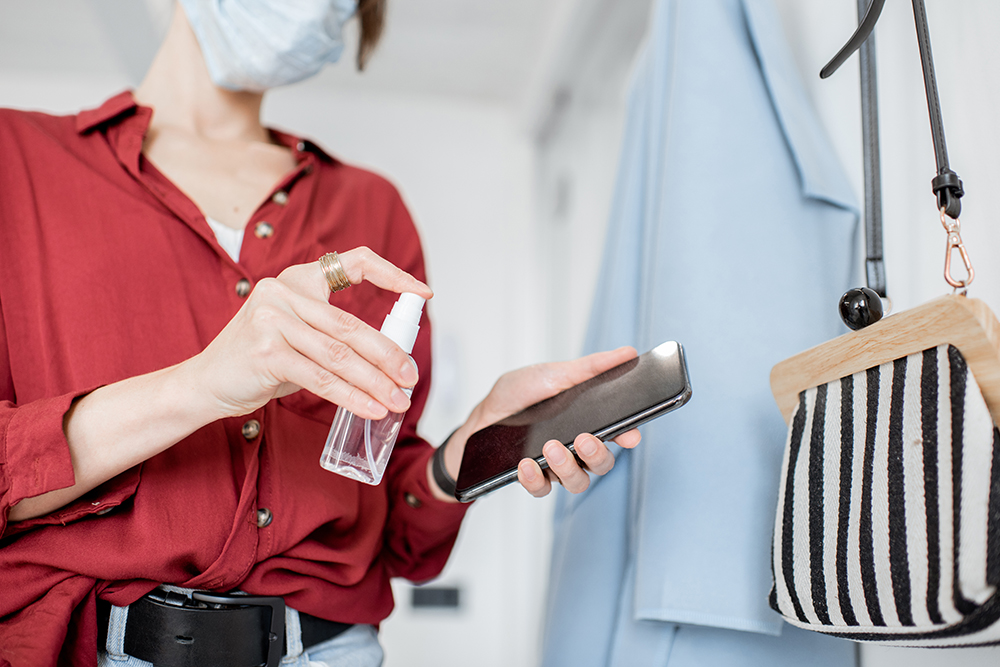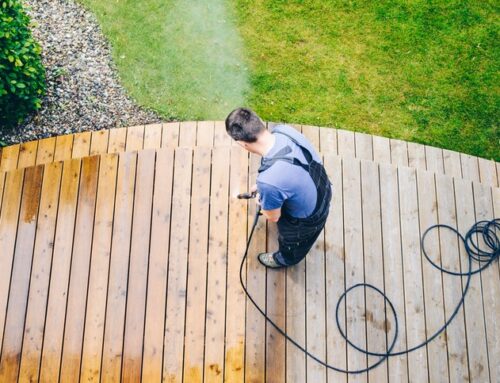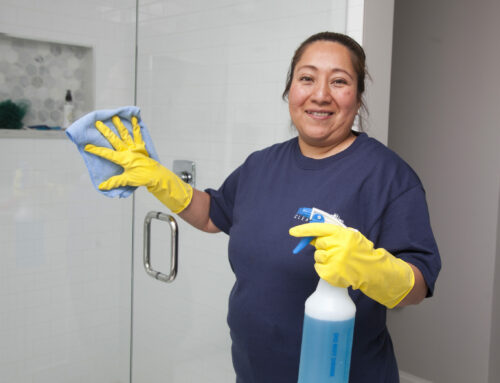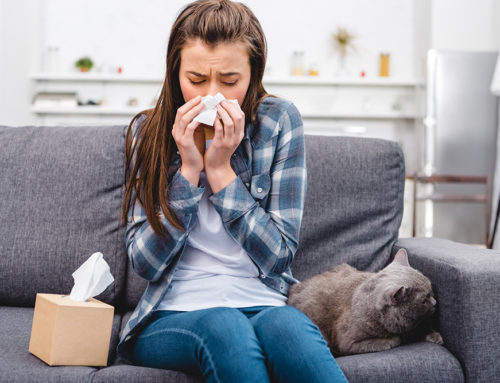With the pandemic going on, it is more important than ever to take steps to disinfect your home. Germs are everywhere, and it is essential to take precautions to avoid getting sick. This is especially important if you have young children or elderly family members.
This blog post will discuss the difference between sanitizing and disinfecting. We will give you tips on disinfecting your home safely and effectively.
Disinfecting vs. Sanitizing
The first step to disinfecting your home is understanding the difference between sanitizing and disinfecting. Most people use the terms interchangeably, but they are two different things.
Sanitizing is cleaning surfaces with soap and water to remove dirt, dust, and other debris. When you sanitize, you are not necessarily killing bacteria or viruses. Disinfecting, on the other hand, refers to using chemicals to kill bacteria and viruses.
It is essential to clean and disinfect your home regularly, especially if someone in your household is sick. Disinfecting will help prevent the spread of illness and keep your family safe.
Even though COVID-19 is mainly transmitted through the air, it is still vital to disinfect sensitive surfaces in your home.
According to the Centers for Disease Control and Prevention (CDC), the risk of contracting COVID-19 lowers when people disinfect surfaces and wash their hands regularly.
The CDC recommends cleaning and disinfecting high-touch surfaces such as doorknobs, light switches, countertops, handles, desks, phones, keyboards, toilets, faucets, and sinks.
High-touch surfaces are those that people frequently touch. Disinfecting these surfaces and cleaning regularly will help prevent the spread of illness.
9 Steps to Disinfect Your Home
Now that we have discussed the difference between sanitizing and disinfecting, let’s go over the steps you need to take to disinfect your home.
Follow these simple steps, and you will be well on your way to having a clean and disinfected home.
Gather your cleaning supplies.
Before you start disinfecting, you will need to gather all of the supplies you will need. This includes gloves, masks, goggles, aprons, and cleaning products. You will also need a trash can and a supply of paper towels.
Make sure that you have everything you need before you start so that you do not have to stop in the middle of disinfecting.
You can also create a homemade bleach disinfectant spray on soft and hard surfaces.
You will need 1/3 cup of bleach per gallon of water to do this. Combine the bleach and water in a clean spray bottle and label it clearly. Use this within 24 hours for the best results. You need to wear gloves when using this to avoid getting bleach on your skin.
You can also use alcohol-based products that contain at least 70% alcohol to disinfect surfaces.
Make sure to read the labels on all cleaning products to ensure they are safe to use on the surfaces in your home.
Open the windows
Before you start cleaning, open the windows in your home to let fresh air in. This will help ventilate the area and remove any fumes from the cleaning products you use.
If possible, open all of the doors and windows in your home to create cross-ventilation. This is especially important if you use bleach or other harsh chemicals.
If it is impossible to open the windows, make sure you turn on the exhaust fans in your home.
You should also wear a mask while cleaning to avoid inhaling harmful chemicals.
Dust all surfaces
The first step in disinfecting is dusting all of your home’s surfaces. This includes wiping down furniture, shelves, cabinets, and countertops.
Use a damp cloth to wipe down surfaces, and be sure to get into all of the nooks and crannies. Pay special attention to areas where dust collects, such as on top doorframes and baseboards.
Once you have dusted all surfaces, vacuum the floors to remove any dust that has fallen.
If possible, do this step outside to avoid spreading dust throughout your home.
Be sure to empty the vacuum bag or canister after you are done so that you do not recirculate the dust. A disinfectant wipe, often found in stores near the cleaning supplies section, can also be used to dust surfaces.
Wiping down surfaces with a disinfectant wipe will kill any present germs.
Differentiate hard and soft surfaces
Soft surfaces can absorb liquids, such as cloth or paper. Hard surfaces are those that cannot, such as metal or plastic.
You will need to use different cleaning products on hard and soft surfaces. For hard surfaces, you can use a bleach solution or alcohol-based cleaner.
For soft surfaces, there are different types of cleaners available. You can use a laundry pre-treatment on upholstered furniture and carpets.
There are also special cleaners available for leather furniture.
Disinfect all surfaces
After you have dusted all surfaces, it is time to start disinfecting.
Start with hard surfaces such as countertops, doorknobs, light fixtures, and appliances.
Be sure to read the labels on all cleaning products to ensure they are safe to use on the surfaces in your home. Some can discolor sensitive surfaces such as wood, so test them in an inconspicuous area first. A bleach solution should be avoided to prevent damage.
Wipe down all surfaces with a disinfectant of your choice, making sure to get into all the nooks and crannies. Pay special attention to frequently touched areas, such as door handles and light switches.
Let the surfaces air dry or wipe them down with a clean cloth after spraying them.
Disinfect soft surfaces
After you have disinfected all of the hard surfaces in your home, it is time to move on to soft surfaces.
This includes upholstered furniture, carpets, and rugs. Use a vacuum with a HEPA filter to remove any dust or dirt from these surfaces before you start cleaning.
There are special cleaners available for upholstered furniture and carpets. Be sure to read the labels to find one that is safe to use on the specific type of fabric you have.
For dirty laundry, use a laundry pre-treatment or stain remover before washing. Wash all fabrics in hot water and dry them on high heat.
Handling dirty laundry can be one of the most challenging parts of cleaning your home. It is important to take precautions to avoid cross-contamination.
Wash your hands thoroughly with soap and water after handling dirty laundry. If possible, wear gloves while doing laundry.
If you have a front-loading washing machine, clean the door gasket regularly. This is a common area for mold and mildew to grow.
Remove any clothing or laundry from the washing machine to clean the door gasket. Wipe down the door gasket with a cloth dampened with bleach solution.
Rinse and dry it thoroughly before adding laundry back into the washing machine.
Clean and disinfect your garbage cans.
Your garbage cans are another breeding ground for germs. Be sure to clean them regularly, especially if they are kept indoors.
Empty the garbage cans and remove any liners. Wash the inside of the garbage can with soap and water. Rinse it well and let it air dry.
Once the garbage cans are dry, you can disinfect them. Be sure to read the label to ensure it is safe to use on the type of material your garbage cans are made of.
Wipe down the inside and outside of the garbage cans with disinfecting wipes. Wipe handles and lids thoroughly, as these areas are frequently touched.
Let the garbage cans air dry or wipe them down with a clean cloth before adding new liners.
Clean your remote controls and other electronics
Disinfecting products can damage some electronics, so it is essential to read the labels carefully.
To clean your remote control, remove the batteries and wipe down the surface with a cloth dampened with an alcohol-based cleaner.
Wipe down all other surfaces of the remote, including buttons and crevices. Let it air dry before adding new batteries.
You can use the same method to clean other electronics, such as your cell phone, computer keyboard, and mouse. Be sure to unplug all electronic devices before cleaning them.
Wash your hands after
Since you will be touching many surfaces while cleaning, washing your hands thoroughly when you are finished is essential.
Wet your hands with warm water and add soap. Rub your hands together for at least 20 seconds, making sure to get all areas, including the backs of your hands and between your fingers.
Rinse your hands well and dry them with a clean towel.
It would be best if you also washed your hands after using the restroom, handling garbage, or coming into contact with someone sick.
Afterward, you can apply a hand sanitizer or rubbing alcohol to ensure that all germs are killed.
How often should I disinfect my house?
It is not necessary to disinfect your home every day. However, you should clean surfaces frequently touched, such as door handles and light switches, at least once a day.
You should also disinfect your home regularly if a sick person has been in your home or if someone in your household is at a higher risk for complications from the flu.
The Centers for Disease Control and Prevention (CDC) recommends that you clean and disinfect your home if someone in your household has the flu or has contracted COVID-19 within 24 hours.
They also recommend that you take extra precautions if someone in your household is at a higher risk for complications from the flu, such as young children, pregnant women, or people with chronic medical conditions.
Conclusion
Touching surfaces may not make you sick, but it can increase your chances of getting sick.
Viruses and germs can live on surfaces for up to 48 hours, so cleaning and disinfecting your home regularly is essential. Doing this can help protect yourself and your family from getting sick.
Cleaning and disinfecting your home is not difficult, but it takes time and effort. Following these simple steps can help keep your home clean and germ-free.





